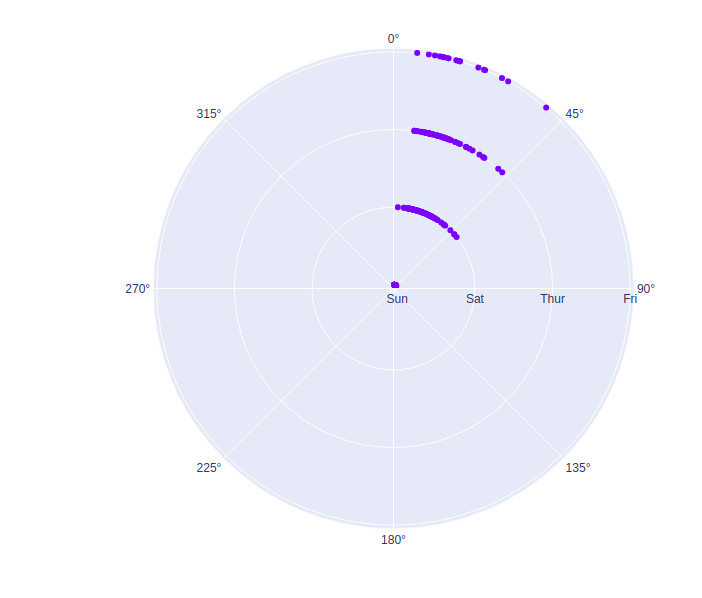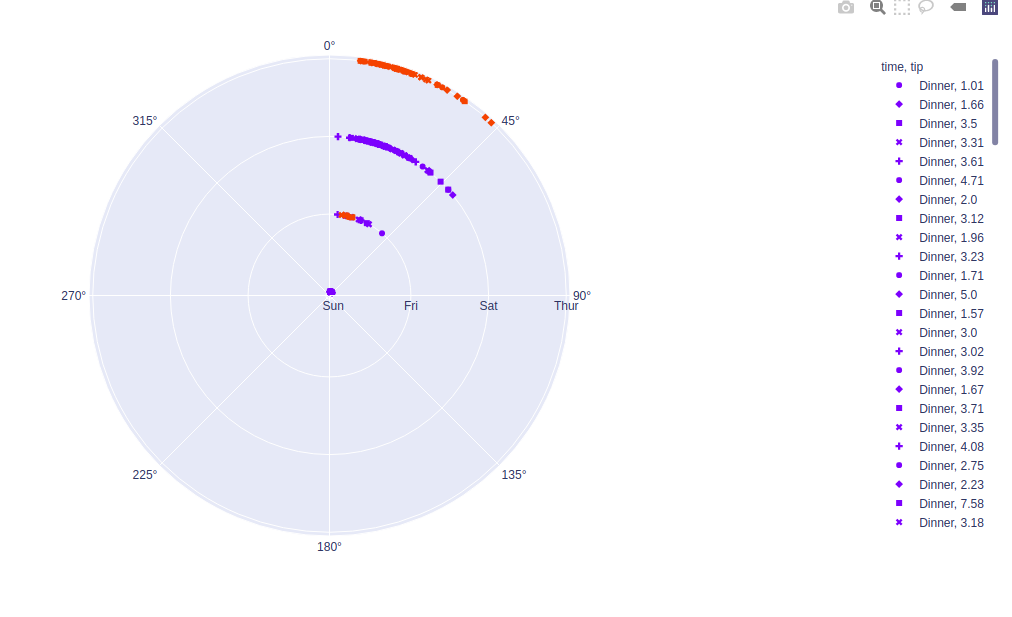Функция plotly.express.scatter_polar () в Python
Библиотека Plotly Python может быть очень полезной для визуализации данных и понимания данных просто и легко. Объекты графического представления представляют собой высокоуровневый интерфейс для построения графиков, который прост в использовании.
функция plotly.express.scatter_polar ()
Эта функция используется для создания полярной диаграммы. Полярная диаграмма представляет данные по радиальной и угловой осям.
Syntax: plotly.express.scatter_polar(data_frame=None, r=None, theta=None, color=None, symbol=None, size=None, hover_name=None, hover_data=None, title=None, template=None, width=None, height=None)
Parameters:
data_frame: DataFrame or array-like or dict needs to be passed for column names.
r, theta: This parameter is either a name of a column in data_frame, or a pandas Series or array_like object. It is used to position marks along the radial and angular axis in polar coordinates respectively.
color: This parameters assign color to marks.
symbol: This parameter is used to assign symbols to marks. It is either a name of a column in data_frame, or a pandas Series or array_like object.
size: This parameter is used to assign mark sizes. It is either a name of a column in data_frame, or a pandas Series or array_like object.
hover_name: Values from this column or array_like appear in bold in the hover tooltip.
hover_data: This parameter is used to appear in the hover tooltip or tuples with a bool or formatting string as first element, and list-like data to appear in hover as second element Values from these columns appear as extra data in the hover tooltip.
title: The figure title
width: The figure width in pixels.
height: The figure height in pixels.
Example 1:
Python3
import plotly.express as px df = px.data.tips() plot = px.scatter_polar(df, r = "day", theta = "total_bill")plot.show() |
Выход:

Example 2: Using color argument
Python3
import plotly.express as px df = px.data.tips() plot = px.scatter_polar(df, r = "day", theta = "total_bill", color="time")plot.show() |
Выход:

Example 3: Using symbol argument
Python3
import plotly.express as px df = px.data.tips() plot = px.scatter_polar(df, r = "day", theta = "total_bill", color = "time", symbol = "tip")plot.show() |
Выход:

Внимание компьютерщик! Укрепите свои основы с помощью базового курса программирования Python и изучите основы.
Для начала подготовьтесь к собеседованию. Расширьте свои концепции структур данных с помощью курса Python DS. А чтобы начать свое путешествие по машинному обучению, присоединяйтесь к курсу Машинное обучение - базовый уровень.